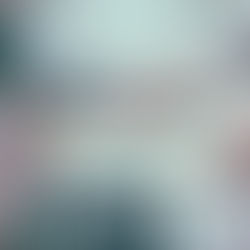Material Matters And Looks Are Everything

Your valuable printed collateral is more than fancy words and ink, it’s also about the material you’re printing on. The material you choose is key to the overall look and feel of the project - it's very important!
You don’t want to run in to problems with dull colours, flimsy material and smudging for instance - you want something that is fit for the purpose, durable and looks as amazing as your product or service.
Matt, Satin or Gloss?
Firstly, the type of material you need to consider is important for a couple of reasons:
1. The aesthetic appearance
2. The functionality
You’ll be aware of the different finishes, especially if you’ve decorated your house recently as the finishes of paper are the same as paint:
Matt is dull
Silk is a bit more shiny
Gloss is super shiny
There’s a place for all of them in your marketing mix depending on the type of job and the objective of your marketing. For instance, flyer and posters are usually shiny, so they stand out. Brochures and booklets could be either.
What is worth considering is if you need to write on any of your collateral, to collect data or hand out personal details, it’s better to use a matt material so a pen will work properly on it.

Paper Weights and Thickness
Paper is measured in GSM, this stands for grams per square metre, that’s pretty self-explanatory but it tells you how many grams are in a single sheet of paper per 1m x 1m.
Now, that might not mean anything to you, but let me give you a little context. Low quality paper in a photocopier is usually 80gsm, that’s that floppy easy to tear stuff, the higher you go in numbers the better the durability and sturdiness.
Letterheads are usually printed on paper to the strength of 100gsm to 120gsm. Leaflets and flyers are usually between 130gsm and 160gsm.
Anything higher than that (170gsm upwards) is classified as board.
So, if you’re printing a top-quality item, then a thicker, better quality material would be prudent. If it’s a high volume, throw away type of leaflet, a lesser, lighter, cheaper material will be fine.

Boards
To give you a better idea of what board is, business cards are commonly 350gsm or 400gsm, postcards can vary from 250gsm to 350gsm and drop cards are often 300gsm.
The surface of a board can also be slightly different and usually is classed as uncoated or coated. One thing to be aware of is that there will be a slight colour variance on the different materials.
The colours will always look stronger and deeper on a coated board (or paper) than an uncoated because the colour will absorb more into an uncoated paper as it’s more porous.
I hope it gives you a little more clarity when it comes to choosing your material for your print media, it may seem like it’s not important, however customers will get a glimpse of your quality through the way your marketing looks and feels – so, make it count!
Don’t forget you can give us a call on 0121 430 9000 if you’re feeling a little stuck when choosing the correct material for your job. We'd be happy to come and show you samples of various materials that you could use for the perfect print job.
























